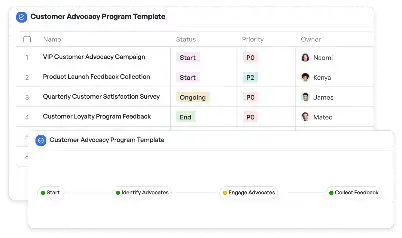Data Labeling Consensus Algorithm
Achieve project success with the Data Labeling Consensus Algorithm today!

What is Data Labeling Consensus Algorithm?
The Data Labeling Consensus Algorithm is a systematic approach designed to ensure the accuracy and reliability of labeled data in machine learning and artificial intelligence projects. This algorithm leverages consensus mechanisms to resolve discrepancies among multiple annotators, ensuring that the final labeled dataset is both consistent and high-quality. In the context of industries such as healthcare, autonomous vehicles, and retail, where data labeling is critical, this algorithm plays a pivotal role in reducing bias and improving model performance. For example, in medical imaging, achieving consensus on tumor identification can significantly enhance diagnostic accuracy. By integrating this algorithm into workflows, teams can streamline the labeling process, minimize errors, and optimize resource allocation.
Try this template now
Who is this Data Labeling Consensus Algorithm Template for?
This template is ideal for data scientists, machine learning engineers, and project managers working in fields that require precise data annotation. Typical roles include AI researchers developing models for autonomous vehicles, healthcare professionals annotating medical datasets, and retail analysts categorizing product images. Additionally, organizations that outsource data labeling tasks to external vendors can benefit from this template to ensure quality control and consistency. Whether you're managing a small team of annotators or overseeing large-scale labeling projects, this template provides the structure needed to achieve consensus efficiently.

Try this template now
Why use this Data Labeling Consensus Algorithm?
The Data Labeling Consensus Algorithm addresses specific pain points in data annotation workflows, such as inconsistent labeling, annotator bias, and time-consuming validation processes. By implementing this template, teams can ensure that discrepancies are resolved systematically, leading to higher-quality datasets. For instance, in autonomous vehicle development, accurate sensor data labeling is crucial for safe navigation. This template facilitates consensus-building among annotators, reducing the risk of errors that could compromise model performance. Furthermore, it provides a clear framework for validation, ensuring that labeled data meets industry standards and project requirements.

Try this template now
Get Started with the Data Labeling Consensus Algorithm
Follow these simple steps to get started with Meegle templates:
1. Click 'Get this Free Template Now' to sign up for Meegle.
2. After signing up, you will be redirected to the Data Labeling Consensus Algorithm. Click 'Use this Template' to create a version of this template in your workspace.
3. Customize the workflow and fields of the template to suit your specific needs.
4. Start using the template and experience the full potential of Meegle!
Try this template now
Free forever for teams up to 20!
The world’s #1 visualized project management tool
Powered by the next gen visual workflow engine




